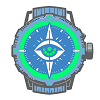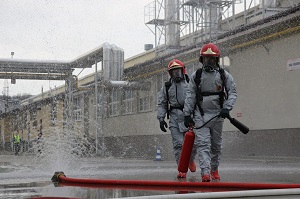![]() Natural Disaster Impacts on Healthcare Services is a news and information topic monitored and covered by: Prepper Watch – Healthcare
Natural Disaster Impacts on Healthcare Services is a news and information topic monitored and covered by: Prepper Watch – Healthcare
Introduction
Natural disasters strike fast, and their impact can be devastating—especially on critical infrastructure like healthcare. Hurricanes can flood hospitals, earthquakes can level clinics, and wildfires can send medical staff fleeing and destroy vital supplies. In the face of these threats, preppers understand one crucial truth: you must be your own first responder.
This blog explores how a prepper would prepare for the collapse or disruption of healthcare services during natural disasters. We’ll cover contingency planning, training, stockpiling, alternative solutions, and real-world strategies to stay medically resilient when the grid goes down and help isn’t coming.
Understanding the Threat — Healthcare in the Crosshairs
Natural disasters can affect healthcare in several key ways:
- Infrastructure destruction: Hospitals, clinics, and pharmacies may be damaged or destroyed.
- Staff displacement: Doctors, nurses, and EMTs may be unable to reach facilities or may evacuate.
- Power and water loss: Life-saving equipment fails without electricity and clean water.
- Supply chain breakdowns: Medications, oxygen, and medical tools may become unavailable.
- Overwhelmed emergency systems: Remaining hospitals may become overloaded or unreachable.
Understanding these vulnerabilities helps preppers anticipate the gaps they’ll need to fill themselves.
Risk Assessment — Know Your Local Hazards
Before preparing for any medical crisis, a prepper must assess which natural disasters are most likely to occur in their region. This determines the focus and urgency of specific medical preparations.
- Hurricanes (coastal and southeastern U.S.): High winds, flooding, and infrastructure loss.
- Earthquakes (California, Alaska, Pacific Northwest): Immediate trauma, long recovery, road and bridge loss.
- Wildfires (California, Texas, Pacific Northwest): Burns, smoke inhalation, fast evacuations.
Use FEMA flood maps, geological surveys, and local fire data to assess your area’s vulnerabilities and prepare accordingly.
Medical Knowledge — Training to Bridge the Gap
When hospitals are offline, knowledge is power. Preppers should pursue essential medical training, including:
- First Aid and CPR (Red Cross, online certification)
- Wilderness First Responder (WFR) for off-grid emergencies
- Basic suturing and wound management
- How to set splints and treat fractures
- Respiratory and burn care
- How to recognize infection and administer antibiotics
- Telemedicine training and radio health consultation
Pair this knowledge with printed medical manuals like:
- Where There Is No Doctor by David Werner
- Emergency War Surgery field manuals
Building a Medical Cache — Stockpiling for Self-Reliance
A robust medical cache ensures you can handle everything from minor cuts to moderate trauma:
Basic Supplies:
- Bandages, gauze, antiseptic wipes, iodine, hydrogen peroxide
- Gloves, masks, thermometers, tweezers, scissors, tape
Trauma and Emergency:
- Tourniquets, chest seals, hemostatic gauze (e.g., QuikClot)
- IV setup (for trained individuals), emergency dental kits
- Splints, SAM splints, burn gel, trauma shears
Medications:
- Over-the-counter meds: painkillers, anti-inflammatories, antidiarrheals, antihistamines
- Prescription meds (secured via programs like Jase Medical or with doctor support)
- Antibiotics, antivirals, asthma meds, EpiPens
All items should be stored in waterproof, well-labeled containers, rotated regularly, and accessible in both bug-in and bug-out scenarios.
Off-Grid Power and Sanitation — Medical Infrastructure at Home
Medical care often depends on electricity and sanitation. When the grid fails:
Power:
- Solar generators or portable power stations to power small devices
- Battery-powered or hand-crank equipment (e.g., nebulizers, CPAP alternatives)
- Backup lighting for nighttime care
Sanitation:
- Alcohol-based hand sanitizers and bleach
- Water purification systems (Berkey filters, iodine tablets, Lifestraws)
- DIY sanitation stations with foot-operated water dispensers and waste control
Hygiene becomes critical in preventing infections when professional care is unavailable.
Creating a Medical Response Plan — Step-by-Step Readiness
Just like fire drills or bug-out plans, a medical response plan saves lives in chaos:
- Triage Area: Designate a safe, clean space for care.
- Triage System: Know how to prioritize injuries in a group.
- Medical Log: Keep written records of symptoms, treatments, medications, and timing.
- Emergency Contacts: Store phone/radio info for medical professionals, ham radio operators, and support networks.
- Evacuation Routes: Know where to go if care is urgently needed—alternate hospitals, mobile clinics, or aid stations.
Practice drills with your family or community group for better readiness.
Long-Term Medical Resilience — Planning Beyond 72 Hours
Most natural disasters last days or weeks—but medical infrastructure can take months to recover.
To extend resilience:
- Grow medicinal herbs (echinacea, yarrow, plantain, etc.)
- Learn herbal tincture preparation
- Build a community medical co-op: Share skills, tools, and supplies
- Use barter-friendly medical items as trade (antibiotics, gauze, EpiPens)
- Protect medication from temperature swings using cool storage or underground caches
If society is slow to rebuild, medical self-sufficiency becomes a long-term necessity.
Special Considerations — Children, Elderly, and Chronically Ill
Preppers should plan for vulnerable populations, who suffer most when healthcare is down:
Children:
- Pediatric doses of medications
- Child-sized first aid and CPR techniques
Elderly:
- Mobility devices, oxygen, prescription management
- Consider cognitive decline and caregiver burden
Chronically Ill:
- Extra prescriptions and durable medical equipment (e.g., insulin, asthma inhalers)
- Manual alternatives for electronic-dependent conditions (like cold packs for fever control)
Build personalized kits for each family member and have a medical “go file” for every individual.
Conclusion — Being the Medic When There Is No Medic
The lesson from every hurricane, wildfire, and earthquake is clear: help may not come soon, or at all. As hospitals collapse and emergency systems are overwhelmed, the difference between life and death often comes down to preparation.
For preppers, this means going beyond Band-Aids and stethoscopes. It means taking responsibility for your health, your family’s survival, and your community’s resilience.
By training yourself, stocking your supplies, and thinking like a medic, you step into the role the system might fail to fill. When disaster strikes, you won’t just survive—you’ll be ready to save others.

